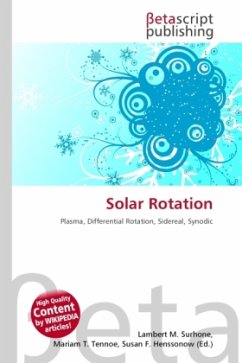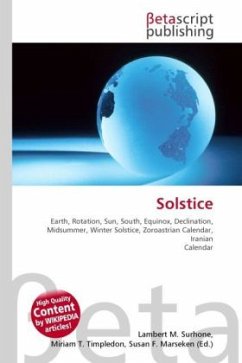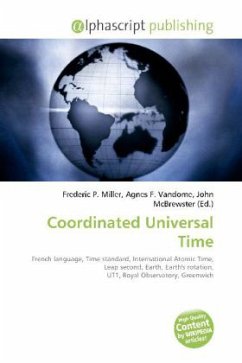
Solar Rotation
Versandkostenfrei!
Versandfertig in 6-10 Tagen
23,99 €
inkl. MwSt.

PAYBACK Punkte
12 °P sammeln!
High Quality Content by WIKIPEDIA articles! Solar rotation is able to vary with latitude because the Sun is composed of a gaseous plasma. The rate of rotation is observed to be fastest at the equator (latitude =0 deg), and to decrease as latitude increases. At the equator the solar rotation period is 24.47 days. This is called the sidereal rotation period, and should not be confused with the synodic rotation period of 26.24 days, which is the time for a fixed feature on the Sun to rotate to the same apparent position as viewed from Earth. The synodic period is longer because the Sun must rotat...
High Quality Content by WIKIPEDIA articles! Solar rotation is able to vary with latitude because the Sun is composed of a gaseous plasma. The rate of rotation is observed to be fastest at the equator (latitude =0 deg), and to decrease as latitude increases. At the equator the solar rotation period is 24.47 days. This is called the sidereal rotation period, and should not be confused with the synodic rotation period of 26.24 days, which is the time for a fixed feature on the Sun to rotate to the same apparent position as viewed from Earth. The synodic period is longer because the Sun must rotate for a sidereal period plus an extra amount due to the orbital motion of the Earth around the Sun.












